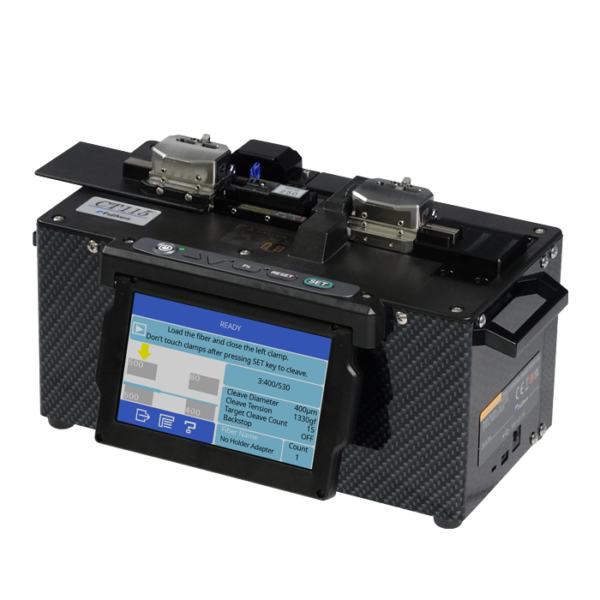Why Optical Fibre Diameter Analyser Tools Are Important for Engineers
Why Optical Fibre Diameter Analyser Tools Are Important for Engineers
Blog Article
Maximize Your Fibre Optic Efficiency: Understanding Optical Fibre Size Analyser Modern Technology
The performance of fibre optic systems is seriously influenced by the precision of their size, a variable often forgot in the search of ideal signal integrity. Comprehending the technology behind optical fiber size analysers exposes the intricate equilibrium in between measurement precision and production high quality. These devices not just improve compliance with industry criteria yet likewise provide real-time insights that can preemptively attend to potential concerns. However, the effects of their usage prolong past simple measurement; they can fundamentally modify the landscape of fibre optic efficiency. What variables should one consider to harness their complete capacity?
Value of Optical Fibre Size
The diameter of optical fibre plays a vital role in establishing the efficiency and efficiency of communication systems. It influences several key specifications, consisting of the setting of light propagation, depletion, and bandwidth ability. Bigger diameters usually permit several light modes, assisting in greater information transmission rates. Conversely, smaller sized sizes often tend to sustain fewer settings, which can improve signal clarity and decrease crosstalk.

In addition, recognizing the diameter's ramifications can lead to cost savings by reducing the need for signal amplification and repeaters in considerable networks (optical fibre diameter analyser). Finally, the importance of optical fiber diameter can not be overemphasized, as it straight affects the general efficiency and reliability of contemporary interaction systems

How Size Influences Signal Quality
Signal quality in optical fiber systems pivots substantially on the size of the fibre. A smaller sized size can lead to greater attenuation rates, resulting in signal loss as light trips through the fibre.
Conversely, bigger diameters usually permit improved light capture and reduced modal dispersion, improving signal clearness. In multimode fibers, a larger core size can support numerous light settings, but it may additionally introduce intermodal dispersion, which can break down signal quality. Picking the optimum fiber size is essential for achieving the desired performance in details applications.
Furthermore, the communication in between the fiber size and the wavelength of the light made use of plays a vital role in figuring out the effective transmission range and general signal integrity. Understanding how fibre diameter affects signal top quality is necessary for network designers and engineers striving to optimize optical fibre systems for reputable, high-speed data transmission.
Overview of Diameter Analyser Technology
In many optical fibre production procedures, accurate dimension of fibre diameter is crucial for making sure consistent performance and quality (optical fibre diameter analyser). Diameter analysers are innovative instruments created to assess the physical measurements of optical fibres with high precision. They utilize sophisticated optical and laser innovations to determine the size, ovality, and concentricity of the fibre, therefore giving important information for quality control
These analysers can run in-line during the production process or as part of off-line testing procedures. In-line systems allow real-time tracking, allowing suppliers to readjust parameters instantly, thus maintaining optimum production conditions. Off-line analysers, on the various other hand, supply thorough assessments of page batches, making sure that any type of discrepancies from defined resistances are determined and attended to.
Diameter analysers substantially contribute to the reduction of flaws in optical fibres, improving overall item reliability. By continually determining vital criteria, these innovations assist in conformity with market requirements and requirements. As the demand for high-performance optical fibres remains to climb, the role of diameter analysers comes to be significantly essential in achieving the desired high quality and efficiency standards in fibre optic systems.
Secret Functions of Fibre Diameter Analysers
Although different designs of fibre size analysers exist, they generally share numerous vital attributes that improve their performance and dependability. Among one of the most substantial attributes is high-resolution dimension abilities, which ensure exact size analyses, critical for keeping quality assurance in fibre production. Additionally, many analysers include innovative optical sensing units developed to identify minute variants in fiber diameter, hence supplying vital data for procedure optimization.
An additional important feature is real-time tracking, enabling drivers to obtain prompt feedback on fiber size throughout the production procedure (optical fibre you could try these out diameter analyser). This capability promotes quick adjustments and lowers the chance of defects. Lots of analysers additionally come geared up with easy to use user interfaces, enabling drivers to conveniently navigate through information and settings outcomes
Moreover, robust information storage space and evaluation functionalities are crucial for tracking historical performance fads and making certain compliance with market standards. These attributes collectively contribute to the efficiency of fibre size analysers in maximizing fiber optic efficiency.
Ideal Practices for Fibre Optimization

First, routine calibration of optical fiber diameter analysers is crucial. This ensures precise measurements and lessens possible discrepancies that can influence efficiency. Next off, maintaining a tidy functioning setting is essential; dust and pollutants can lead to signal degradation.
In addition, it is vital to choose fibers that satisfy specific application needs. This involves examining factors such as depletion, data transfer, and environmental problems. Correct setup methods ought to likewise be complied with, including preventing sharp bends and too much tension, which can jeopardize fibre stability.
Moreover, employing advanced monitoring systems can assist in real-time performance analyses, allowing timely identification of problems. Routine testing and maintenance need to be conducted to make sure that fibers remain within optimal functional specifications.
Lastly, training employees on the most up to date fiber optimization modern technologies and approaches will certainly enhance their capability to execute efficient strategies. By adhering to these ideal techniques, companies can significantly enhance the efficiency and lifespan of their optical fiber systems, guaranteeing effective interaction and information transfer.
Conclusion
Finally, the integration of optical fiber diameter analyser innovation is vital for optimizing fiber optic performance. By making certain precise dimensions of fiber measurements, these analysers dramatically enhance signal quality and minimize losses throughout data transmission. Normal calibration and upkeep of the analysers are important article source to copyright ideal performance and compliance with industry requirements. Ultimately, the application of this modern technology promotes boosted information transmission rates and strengthens signal stability, contributing to the general performance of fiber optic systems.
Signal high quality in optical fiber systems hinges significantly on the size of the fibre.In several optical fiber manufacturing processes, exact dimension of fiber diameter is essential for making certain constant efficiency and top quality. As the demand for high-performance optical fibres continues to rise, the function of diameter analysers comes to be progressively important in achieving the preferred quality and efficiency requirements in fibre optic systems.
These features collectively add to the efficiency of fibre size analysers in optimizing fibre optic performance.
In final thought, the assimilation of optical fiber size analyser modern technology is crucial for making best use of fiber optic efficiency.
Report this page